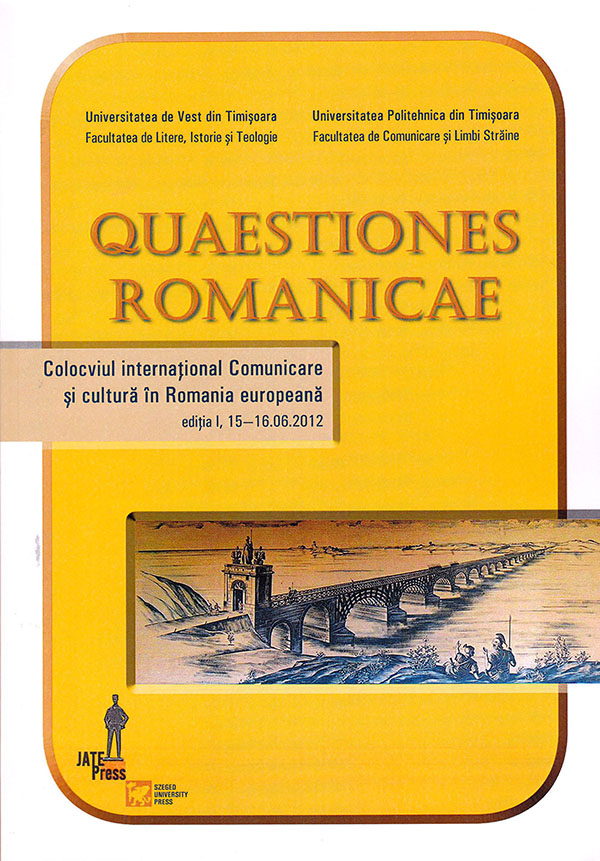Româna – o descriere tipologică
Abstract: (Romanian – a Typological Description) Typologically speaking, the structural base of Romanian is that of a Romance language. Its vocabulary, directly or indirectly, is fundamentally Latin. Its grammatical structures are not fundamentally different from the Romance ones. Romanian develops the possibilities which exist in all the other Romance languages, but, while the Western Romance Languages reduce some of these possibilities or brake them, Romanian generalizes them, as it is shown in several paragraphs of this paper. All these evolutions, as well as the great richness of borrowings from other languages, the less regular phonetic transformations, the less free word formation of new words, yet motivated, the more open meaning creations seem to be the symptoms of a more natural linguistic evolution of Romanian, by contrast to the rest of the Romance standard languages. In the current paper, our objective is to indicate and, where it was possible, to explain a series of features, especially grammatical, which represent, by abstraction, the Romance linguistic type and the Romanian subtype. Our thesis is that the individualisation, the eccentricity of Romanian, is the result of a linguistic evolution less braked by the continuous presence of the Latin model and by a considerable grammatical adjustment, a more natural one.
Keywords: the Romance linguistic type, the Romanian linguistic subtype, linguistic evolution, the Latin model, Romance languages.
Rezumat: Din punct de vedere tipologic, baza structurală a românei este romanică. Vocabularul ei, în linie directă sau indirectă este fundamental latin. Structurile ei gramaticale nu sunt fundamental diferite de cele romanice. Româna dezvoltă posibilităţile care există în toate limbile romanice, dar, în timp ce limbile romanice occidentale reduc unele din aceste posibilităţi sau le frânează dezvoltarea, româna le generalizează, cum am arătat deja în diferite paragrafe ale acestei expuneri. Toate aceste evoluţii, ca şi marea bogăţie de împrumuturi preluate din alte limbi, transformările fonetice mai puţin regulate, formarea de cuvinte noi mai puţin liberă, însă motivată, creaţiile semantice mai libere par toate simptome ale unei evoluţii lingvistice mai naturale a românei în comparaţie cu restul limbilor romanice standard. În lucrare am încercat să indicăm şi acolo unde este posibil să explicăm o serie de trăsături, mai ales gramaticale, care constituie, prin abstractizare, tipul lingvistic romanic şi subtipul românesc. Ipoteza noastră este aceea că individualitatea, excentricitatea românei este rezultatul unei dezvoltări lingvistice mai puțin frânate de prezenţa continuă a modelului latin şi de o amplă normare gramaticală, o dezvoltare cu atât mai naturală.
Cuvinte-cheie: tipul lingvistic romanic, subtipul lingvistic românesc, evoluție lingvistică, modelul latin, limbi romanice.
